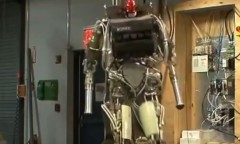By Jacques Strauss, | March 30, 2017

An artist interpretation of an alien life is being displayed.
Caltech has recently announced their achievement concerning an alien finder. A group of scientists from California Institute of Technology revealed a solution that makes use of a telescope as "alien-hunting instruments."
Humankind has long been fascinated with the outer space. With the development of technology, men were sent to space, while others managed to land on the surface of the moon. Such quest for adventure and knowledge is now aimed by experts discovering extra-terrestrial life forms light-years away from Earth.
Like Us on Facebook
In order to make such goal possible, tech experts and scientists worldwide started developing a powerful telescope to help them with the said mission. To serve as an upgrade, experts at Caltech's Exoplanet Technology Laboratory introduced a technique known as "high-dispersion coronagraphy" that would help scientists locate biosignatures on exoplanets, according to Inverse.
As an overview, an exoplanet or extrasolar planet is a planet that orbits a star outside our solar system, according to Harvard.Edu. One of best-known example for it is the recently discovered seven potentially habitable extrasolar planet orbiting around the TRAPPIST-1 star, which is t 40 light-years away from our solar system.
That being said, scientists and astronomers are now being drawn to the said exoplanets hoping to find alien life. One way of achieving such goal, biosignatures on exoplanets should be discovered. And for that matter, Caltech "high-dispersion coronagraphy," would be much helpful.
These biosignatures serve as an indicator that an unknown force or process exists on a particular planet. By turning currently used powerful telescopes into an alien finder, certain biosignatures may be detected like photosynthesis or even a gas that would indicate organic life source.
For such process to proceed, experts need to block the light coming from a star that an exoplanet is orbiting. With the help of coronagraph, starlight is being blocked. Therefore giving scientists more opportunity to study a certain planet with less concern for too much light interference.
With the help of such technological improvement, experts are hoping to find a planet similar to our own planet. However, it would take more time before we can finally identify an Earth-like exoplanet.
Watch here below extrasolar planet discussion:
-
Use of Coronavirus Pandemic Drones Raises Privacy Concerns: Drones Spread Fear, Local Officials Say

-
Coronavirus Hampers The Delivery Of Lockheed Martin F-35 Stealth Fighters For 2020

-
Instagram Speeds Up Plans to Add Account Memorialization Feature Due to COVID-19 Deaths

-
NASA: Perseverance Plans to Bring 'Mars Rock' to Earth in 2031

-
600 Dead And 3,000 In The Hospital as Iranians Believed Drinking High-Concentrations of Alcohol Can Cure The Coronavirus

-
600 Dead And 3,000 In The Hospital as Iranians Believed Drinking High-Concentrations of Alcohol Can Cure The Coronavirus

-
COVID-19: Doctors, Nurses Use Virtual Reality to Learn New Skills in Treating Coronavirus Patients











